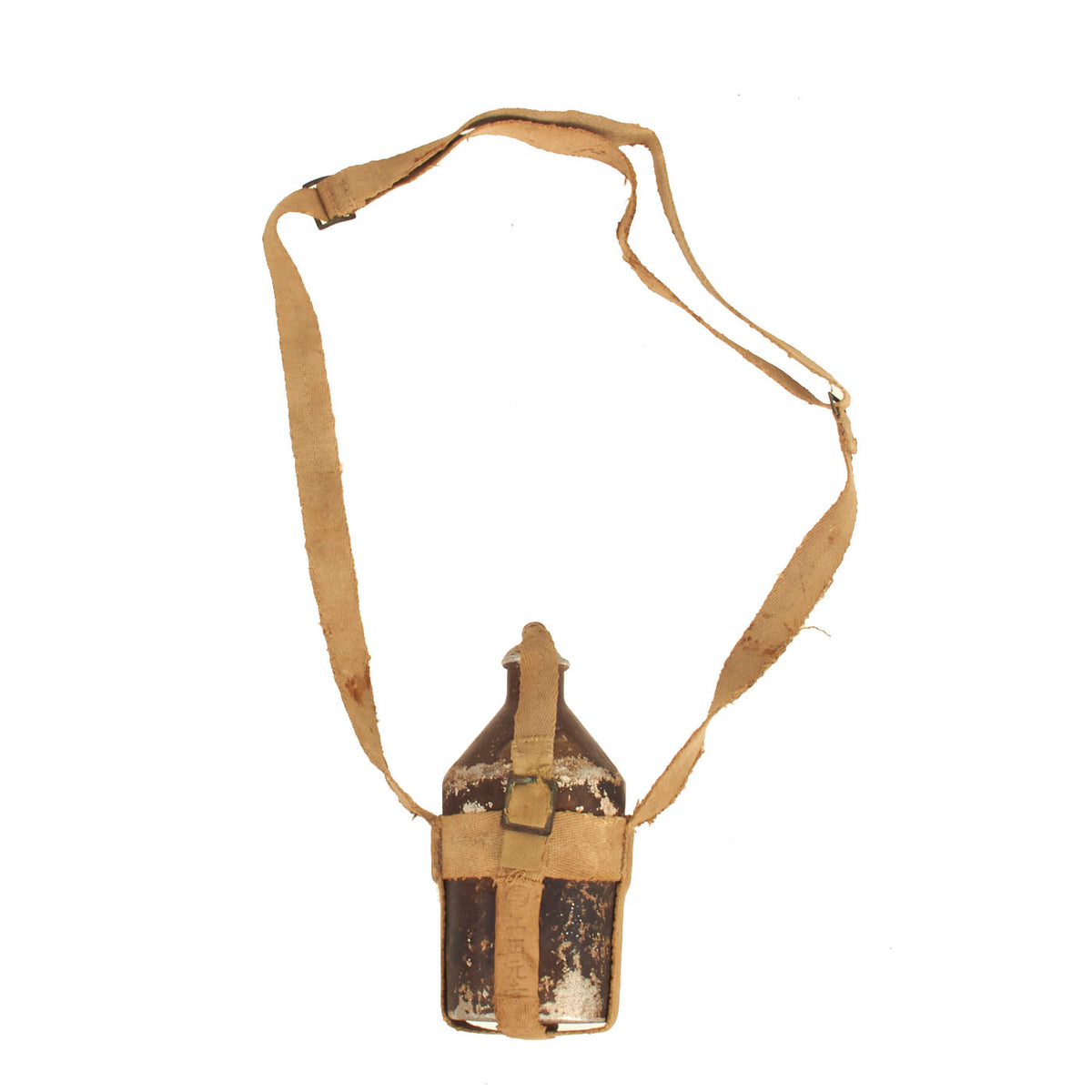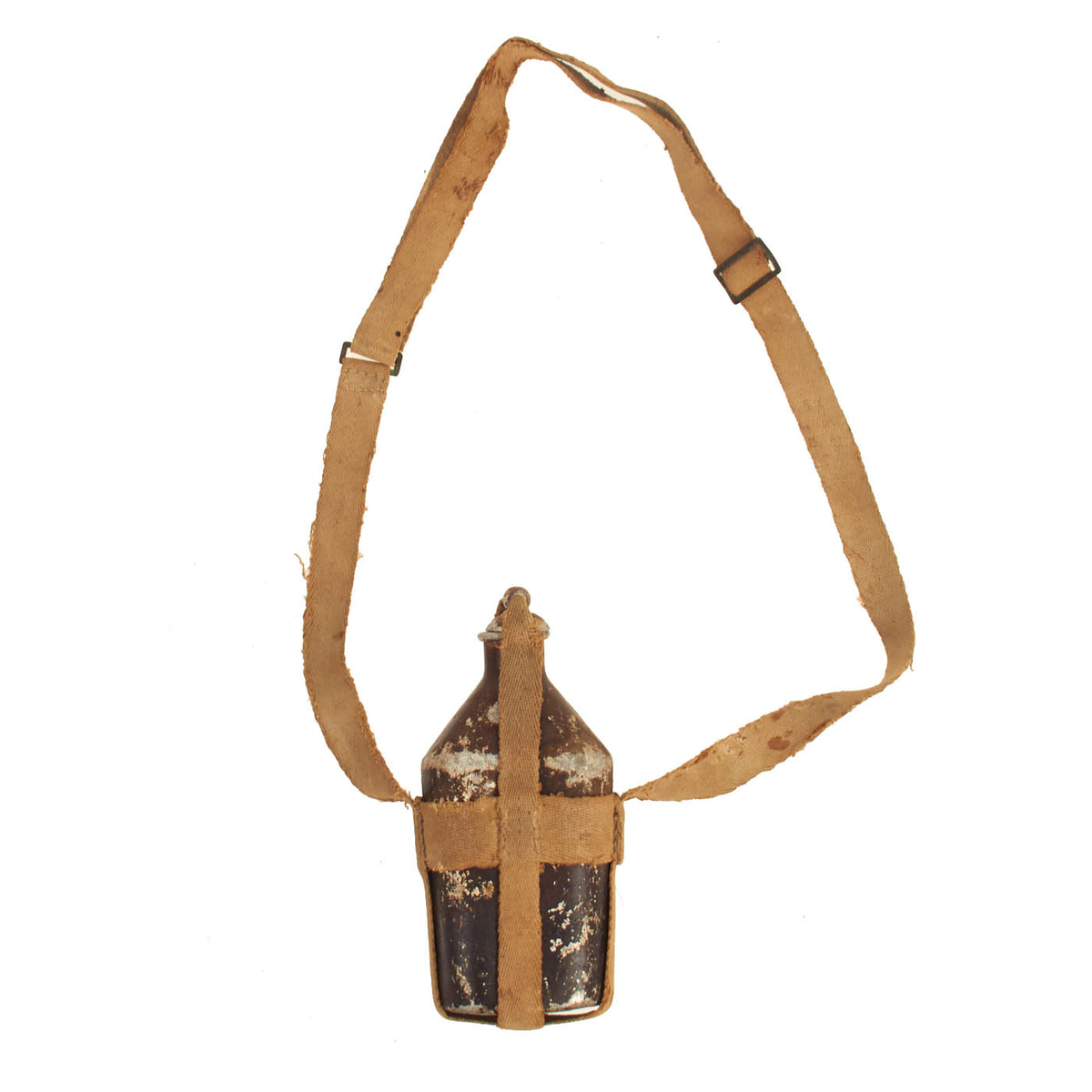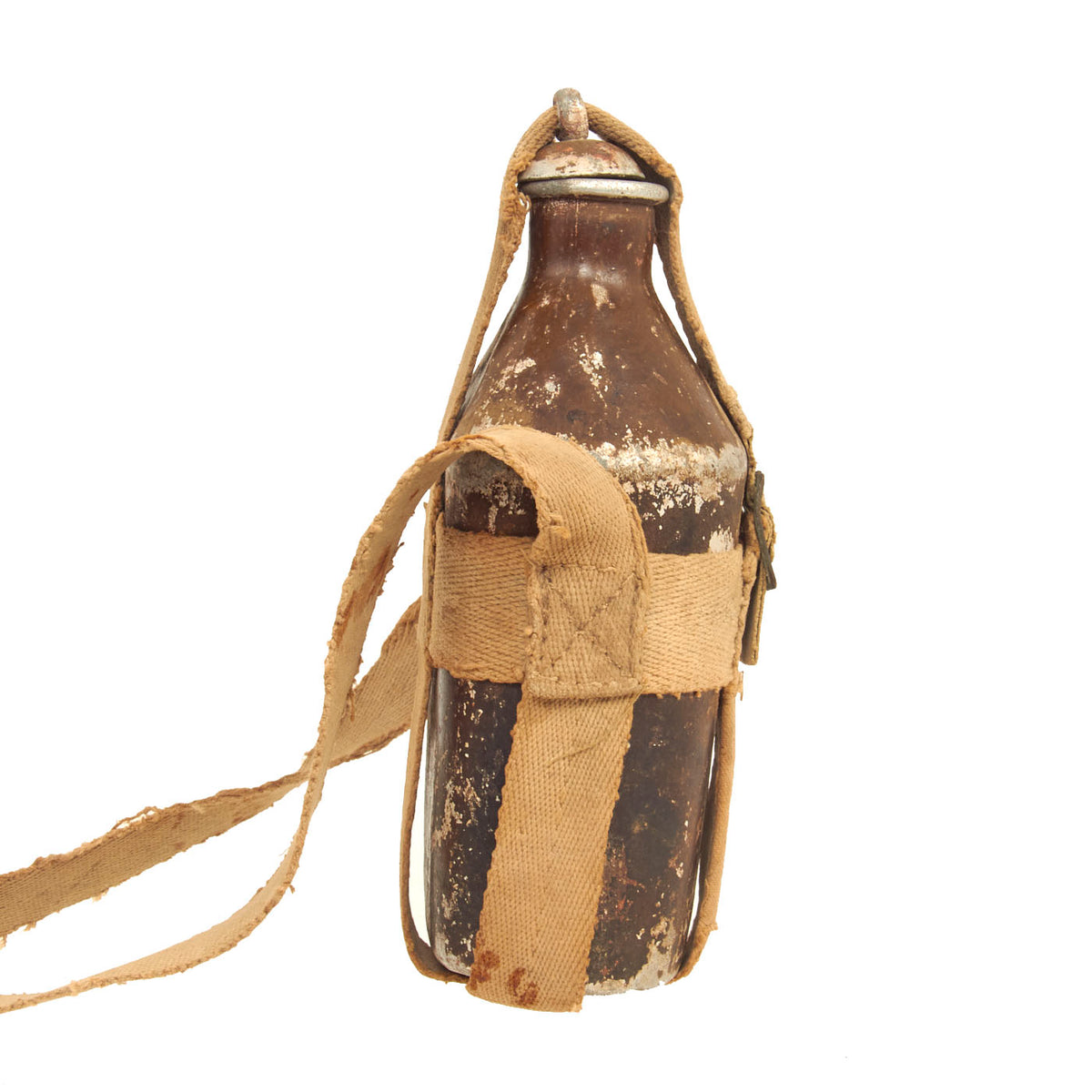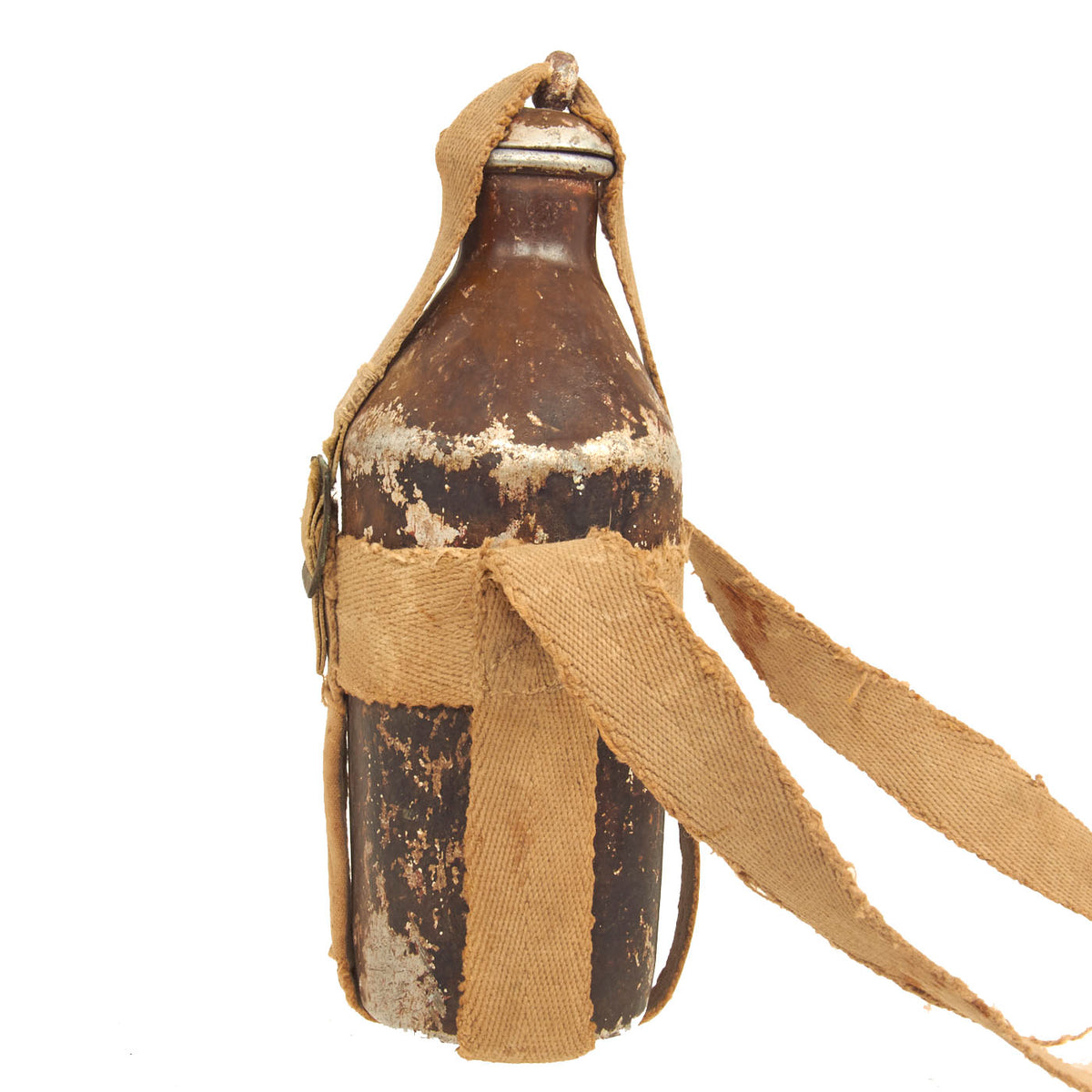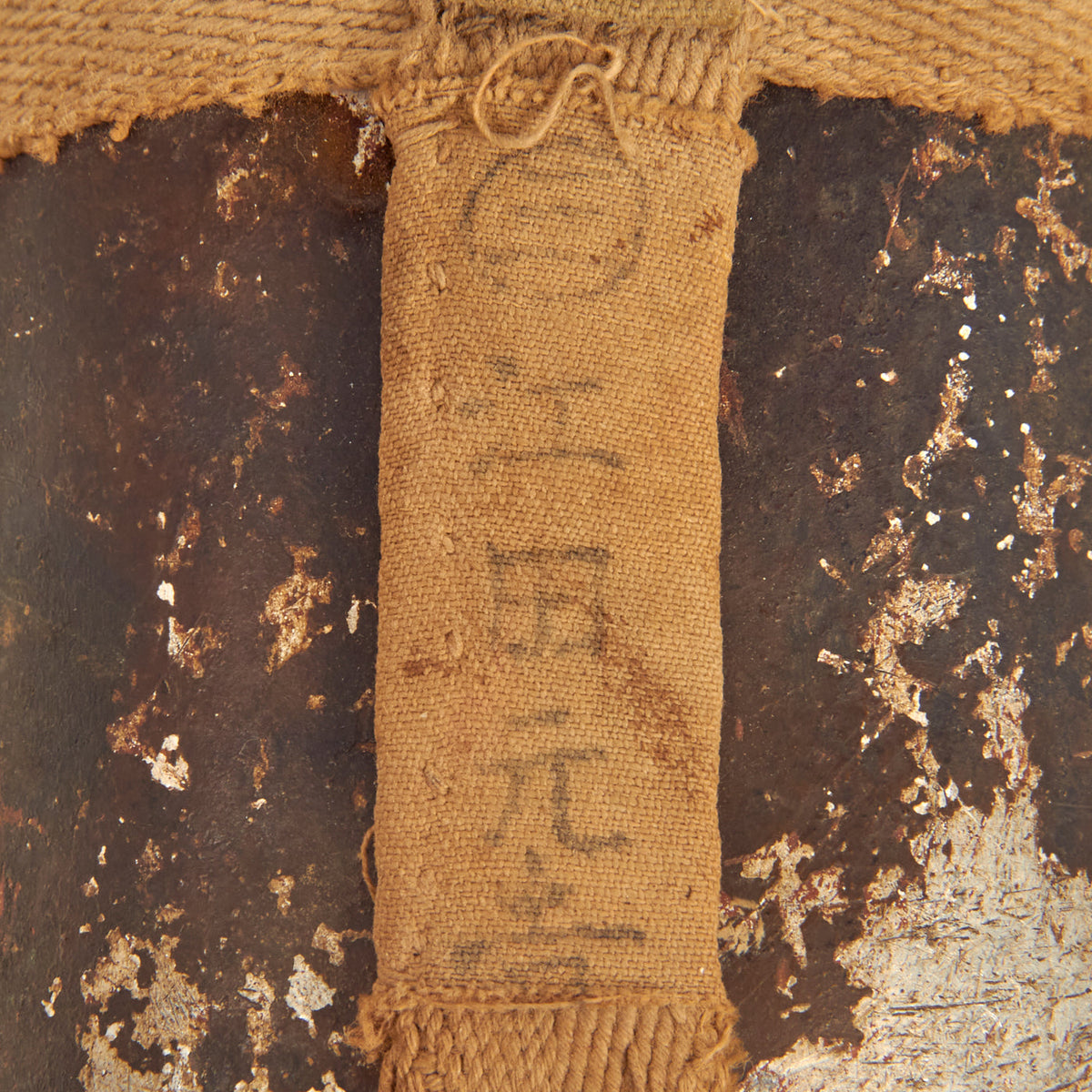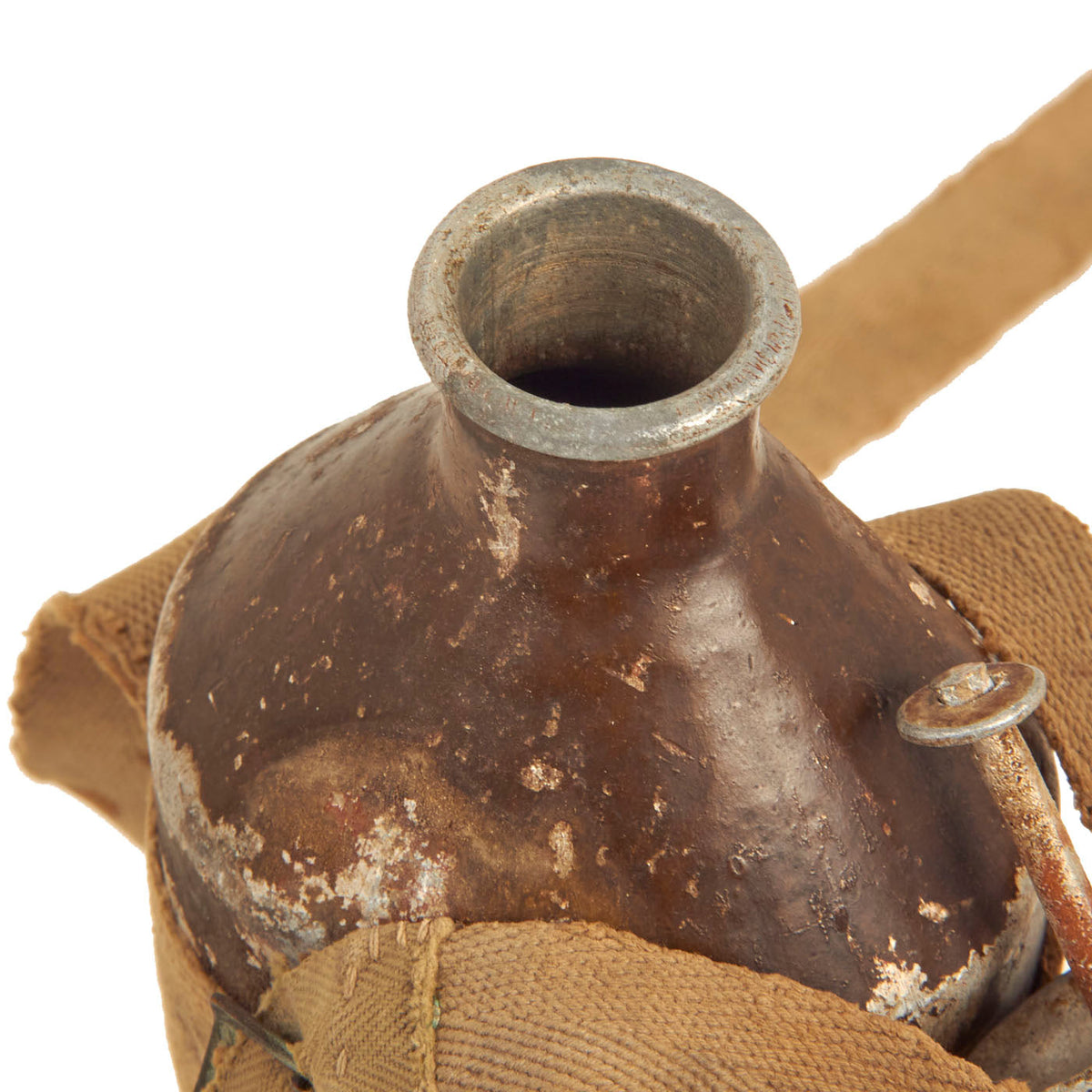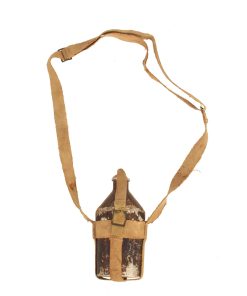Original 1905-WWI Period Japanese Canteen-WWII GI Bringback from the South Pacific! Original Items
$ 195,00 $ 78,00
Original Item: Only One Available. This is a nice example of an Original WWI Era Japanese Issue Canteen. This is the Pattern 1905 Canteen, with the updated canvas suspension harness which dates from the WWI era. This was recently acquired by IMA from a lot of Japanese souvenirs which were sent home by an American GI as war trophies from the South Pacific.
On 23rd June 1910, the commander of the 18th Division wrote to the Minister of the Army in some surprise that when his units took inventory of stocked hardware, they found out that as many as 1900 canteens in the inventory of the 46th Infantry Regiment received after the Russo-Japanese War had the incorrect specs of carry harnesses made of cotton webbing instead of leather. This same problem existed in stocks at the Heavy Artillery Battalion, where 438 pieces were found with the incorrect harness. The Division wanted to receive the correct leather harnesses to replace the wrong ones.
During the Russo-Japanese War, Japan was at the brink of bankruptcy and didn’t even have enough money left to produce the badly needed artillery shells, so this tight situation had naturally caused this emergency switch in materials without a change in specs. However, this situation suddenly became the norm 9 years after the complaint from the 18th Division. Army Ordinance Number 7, which was announced on 14th March, 1919 said that the carry straps for the canteen was now to be in cotton webbing in a brownish earth color, the only exception being the strap for the cork stopper, which was to be in leather. Metal hardware was to have a baked on earth color paint finish. The background for this change was that leather supply was always tight and leather had the drawback of losing suppleness during storage to become brittle and moldy. Furthermore the leather harness had to be supplied in different versions for cavalry and infantry models, making production inefficient. Leather also did not stand up well to the heat when the canteen needed to be filled with hot water. The design of the harness stayed unchanged from the leather version, but the cotton webbing was now supposed to serve both cavalry and infantry needs.
At this point, like me, you will be saying “huh, where did I miss the explanation on how the leather cavalry harness used to differ from those for the infantry?” Well, the specs never mentioned this, and I also only heard it the first time as background explanation for this change to webbing in 1919. But it had been there before our eyes ever since the spec descriptions of 1898, hidden within the comment that said “the cavalryman needed to keep his right hip free of canteens (presumably to wield a saber or a lance), but infantrymen were to wear it at the right hip”. Have you figured it out?
If not, the answer is in the position of the adjustment buckle of the shoulder strap. This has to come to the front when infantrymen hang it from left to right, and cavalry men from right to left. The canteen itself has a flat back, so the harness was also made in a way that did not allow wearing the front and rear reversed. This meant that the leather infantry canteen harness had the buckled strap section on the right side of the canteen when you see the canteen from the front. The cavalry version had the buckle on the left side. A 1917 manual explained that the correct wearing height of the canteen was to have the top of the cork stopper just about touching the lower edge of the waist belt, so adjustment to this height meant you needed access to the strap buckle. This distinction between the infantry and cavalry models would have existed since 1898, as the cavalry had always been involved in the field tests prior to the introduction of the new canteen. This difference was abolished in 1919 by allowing the webbed harness to accommodate the canteen front and back reversed, which changed the strap buckle position to suit infantry and cavalry.
Overall a wonderful wartime issue canteen offered complete and dated. Ready to add to your collection!
Fast Shipping with Professional Packaging
Thanks to our longstanding association with UPS FedEx DHL, and other major international carriers, we are able to provide a range of shipping options. Our warehouse staff is expertly trained and will wrap your products according to our exact and precise specifications. Prior to shipping, your goods will be thoroughly examined and securely secured. We ship to thousands clients each day across multiple countries. This shows how we're dedicated to be the largest retailer on the internet. Warehouses and distribution centres can be located throughout Europe as well as the USA.
Note: Orders with more than one item will be assigned a processing date depending on the item.
Before shipping before shipping, we'll conduct a thorough inspection of the items you have ordered. Today, the majority of orders will be delivered within 48 hours. The delivery time will be between 3-7 days.
Returns
The stock is dynamic and we cannot completely manage it because multiple stakeholders are involved, including our factory and warehouse. So the actual stock may alter at any time. It's possible that you may not receive your order once the order has been made.
Our policy is valid for a period of 30 days. If you don't receive the product within 30 days, we are not able to issue a refund or an exchange.
You can only return an item if it is unused and in the same state as the day you received it. You must have the item in its original packaging.
Related products
Uncategorized
Uncategorized
Uncategorized
Uncategorized
Uncategorized
Band of Brothers ORIGINAL GERMAN WWII Le. F.H. 18 10.5cm ARTILLERY PIECE Original Items
Uncategorized
Uncategorized
Uncategorized
Uncategorized
Uncategorized
Uncategorized
Uncategorized
Uncategorized
Uncategorized
Uncategorized
Uncategorized
Uncategorized
